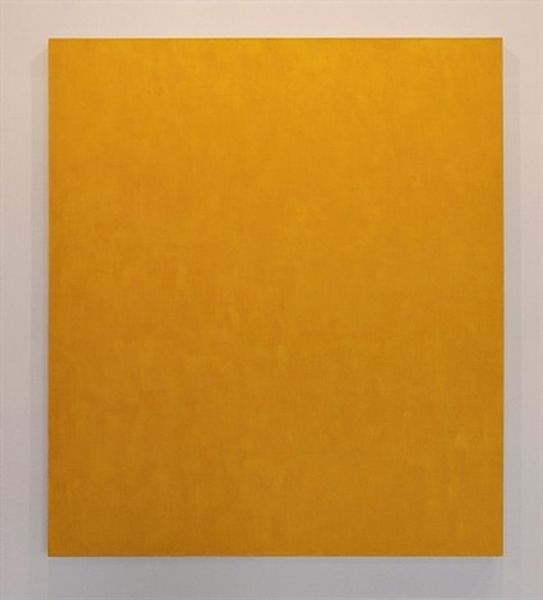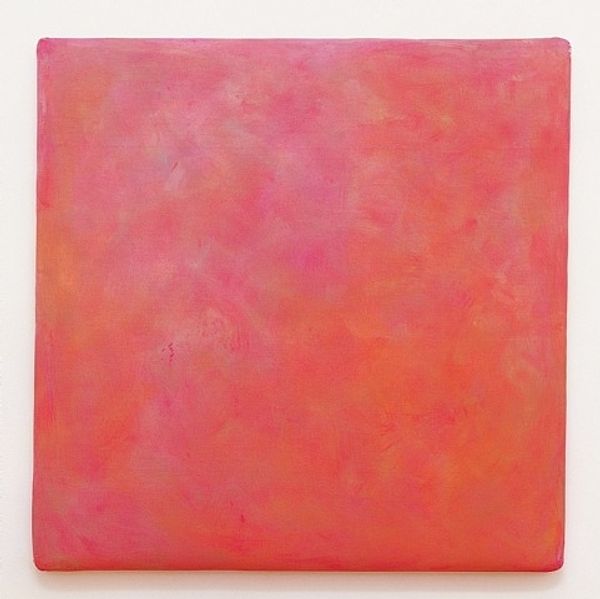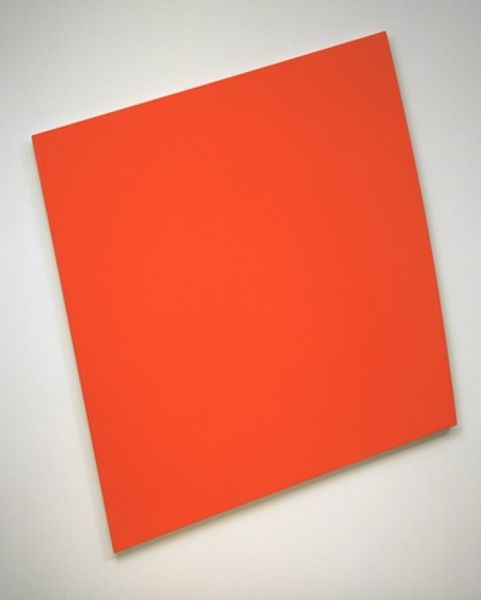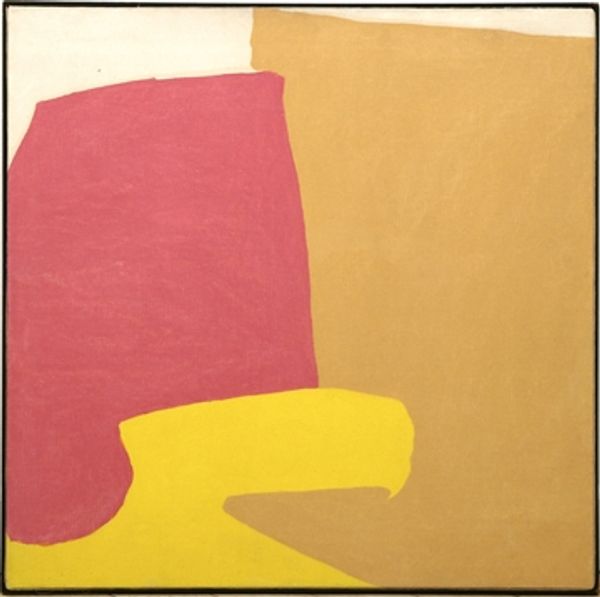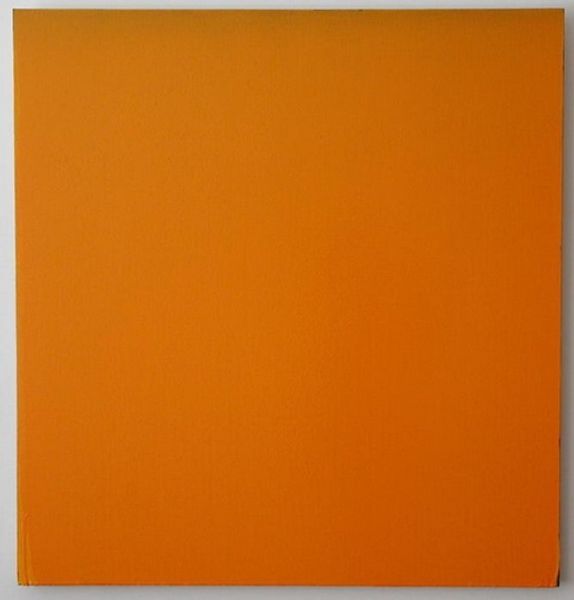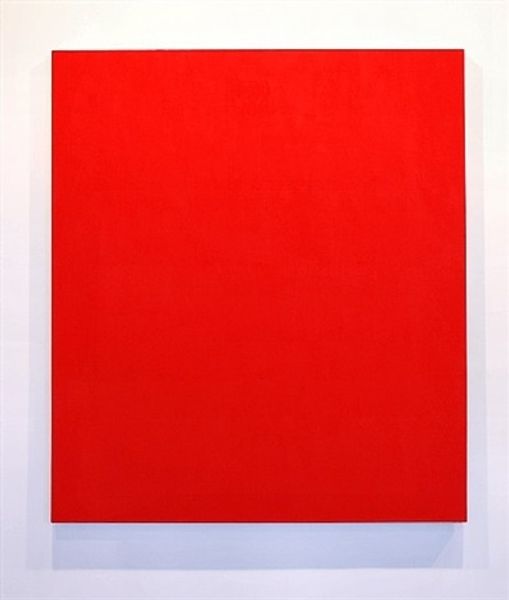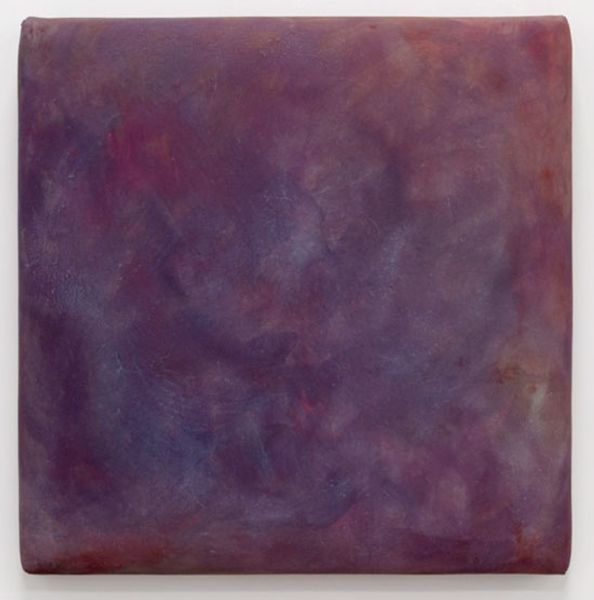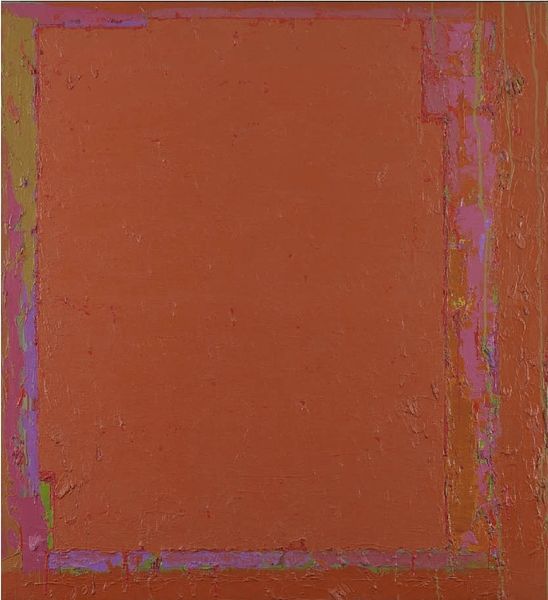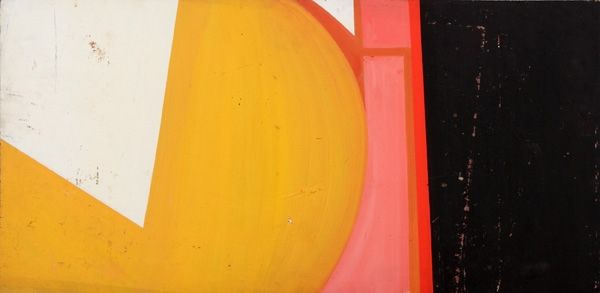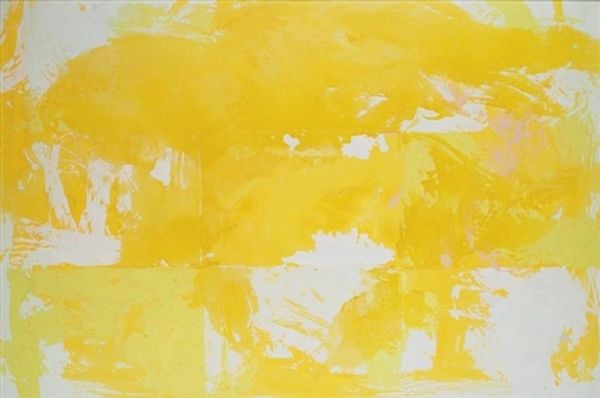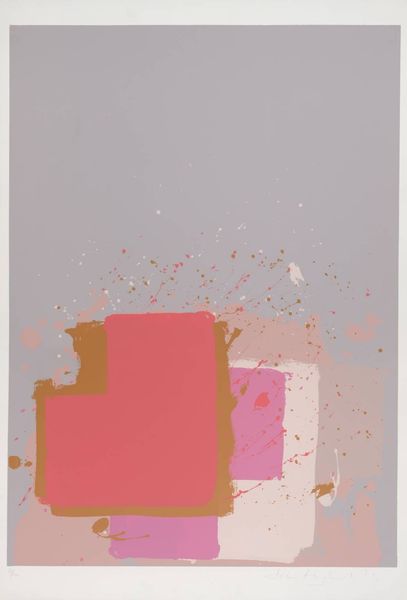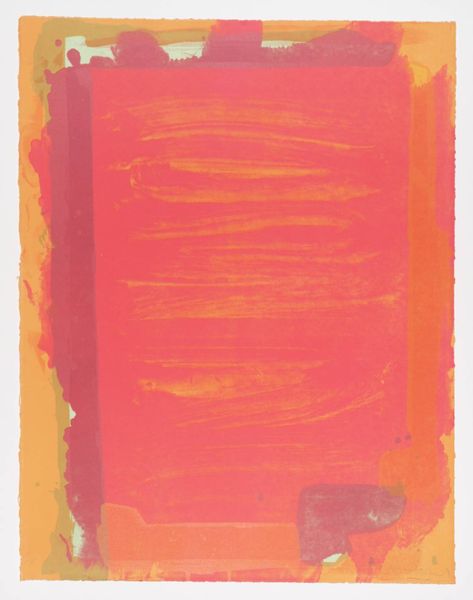
Copyright: Gotthard Graubner,Fair Use
Editor: This is "Caldo," made in 2002 by Gotthard Graubner using acrylic paint. It’s a really striking orange square. Honestly, it just looks like warmth, a feeling of solid heat radiating outwards. What do you make of it? Curator: That title, "Caldo"—meaning "warm" or "hot"—certainly keys us into something deliberate. Beyond the immediate sensation of warmth, consider how color itself functions culturally. Orange, for instance, can be associated with energy, happiness, even divinity in some Eastern traditions. But then there's the stark geometry. What symbolic weight might a square hold? Editor: That's interesting, I hadn't thought about the square's symbolism. So, could its shape somehow be referencing something more concrete, a cultural idea or a specific image? Curator: Possibly. Squares have been understood across history to stand for the earth, stability, or even rigid order, contrasting against the perceived fluidity of the circle, for instance. So how might Graubner be playing with this tension – a shape of earthly grounding rendered in such an ethereal, warm color? Editor: I see what you mean. Maybe it’s about finding warmth and vibrancy within something normally seen as stable or static? Curator: Precisely. Graubner offers us an experience beyond the merely decorative, suggesting that even the most simple forms, the warmest colors, carry within them historical and cultural echoes. Editor: This has really made me think about abstract art in a whole new way. It’s much more than just what’s on the surface. Curator: Indeed. Visual simplicity can often belie profound cultural and symbolic depth.
Comments
No comments
Be the first to comment and join the conversation on the ultimate creative platform.
